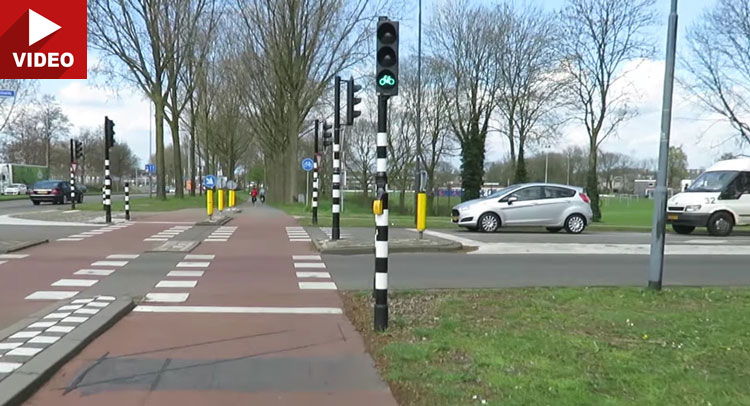Most of us have experienced a red traffic light late at night, when there were no other vehicles anywhere in sight, but what if city officials could apply the latest tech to save us time and alleviate frustration?
Τhe capital of the North Brabant province in Southern Netherlands, ‘s-Hertogenbosch (“The Duke’s Forest” in English), population 150,000, has a truly intuitive traffic light system that changes according to each road user regardless if it’s a car, truck, bus, cyclist or pedestrian.
It uses complicated algorithms, detection loops to measure speed and direction and a computer that mixes up all the information to make sure that traffic is fluidized automatically as soon as possible, with only 4 seconds of green time, or slightly longer when necessary.
“If we have detected them well, and when we also determined their speed well, it is possible to give someone 3.2 seconds extra instead of 4 seconds. That 0.8 seconds difference can be given to other road users and you’ve just seen what a difference that can make“, said Eric Greweldinger, traffic regulation installation expert of ‘s-Hertogenbosch.
He explained how every tens of a second is valuable and can make a significant difference in having a congested junction or a clear one, even if these aren’t linked together to offer a green wave.
“A motor vehicle needs about 2 seconds to start moving and clear the junction. If I have to prolong a cycle with 2 seconds, that means one car less through the intersection. Suppose the entire cycle is 60 seconds, then it would mean I have 60 cars fewer in one hour. That is 60 times the length of a car, or 60 times 5 to 6 meters. In other words: those 2 seconds will build me a traffic jam of 300 to 350 meters in just one hour“, Greweldinger added.
The system doesn’t allow road users to see the lights anymore once they have passed them, so they have no idea that the colors already changed by that time. In fact, the only ones who can see the signals on the far side are pedestrians, who often get confused: “The light already changes while they are still making their crossing, but lights are a starting signal. Once you have started your crossing, you are always allowed to finish it.“
Less than one percent of motor vehicles run a red light in ‘s-Hertogenbosch, compared to one to two percent in the rest of the Netherlands. Greweldinger feels there is room for improvement, but he believes that this behavior cannot be eradicated, especially for cyclists, who tend to break the rules more often than drivers.
All traffic participants are constantly monitored through video images, which are not stored due to privacy reasons, but the info is kept in a database, giving engineers all the information they need. In extreme cases, a film can be taken to court as legal proof and the brain behind the intelligent traffic light system gave a short example.
“We once had a cyclist who claimed a car had hit him while he had a green light. He wanted the driver to pay for his broken laptop and other belongings, which were damaged in the crash. However, our logs clearly showed it was him who had run the red light and the driver was not at fault. Much to the surprise of this young man. He had no idea we monitor every single road user’s behavior and that this was also legal proof.“
In the Netherlands, there are approximately 5,500 signalized junctions, out of which 1,268 are due to be modernized with the latest tech by 2018. These are backed up by the authorities, companies and a significant number of people.
Source: BicycleDutch



